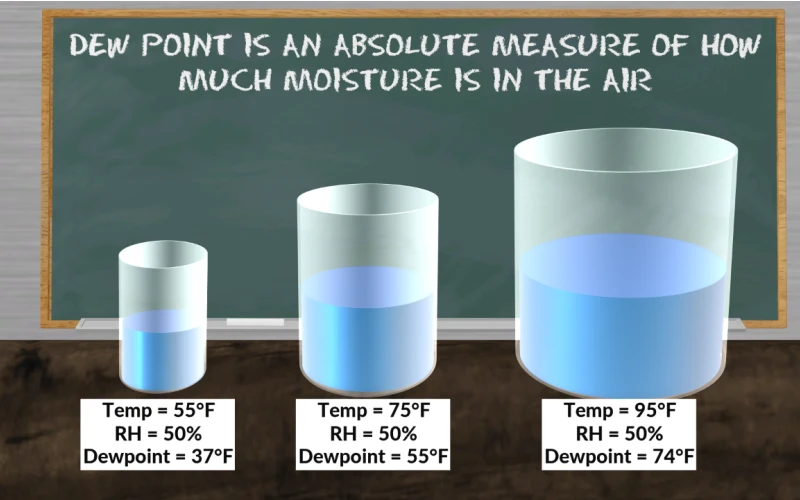
# How is Dew Point Calculated?
## Understanding Dew Point
Dew point is the temperature at which air becomes saturated with water vapor, leading to the formation of dew, fog, or frost. It’s a crucial measurement in meteorology, HVAC systems, and various industrial processes. Understanding how to calculate dew point helps predict condensation and assess comfort levels in different environments.
## The Basic Formula
The most common method for calculating dew point uses the Magnus formula:
Td = (b × α(T,RH)) / (a – α(T,RH))
Where:
– Td is the dew point temperature
– T is the current air temperature
– RH is the relative humidity (as a decimal)
– a and b are constants (a = 17.27, b = 237.7°C for temperatures above 0°C)
– α(T,RH) = (a × T) / (b + T) + ln(RH)
## Step-by-Step Calculation Process
1. Convert relative humidity from percentage to decimal (divide by 100)
2. Calculate the intermediate value α(T,RH)
3. Plug the values into the dew point formula
4. The result will be in °C (for Fahrenheit, convert after calculation)
## Practical Example
Let’s calculate dew point for 25°C with 60% relative humidity:
1. RH = 60/100 = 0.6
2. α = (17.27 × 25)/(237.7 + 25) + ln(0.6) ≈ 1.646 + (-0.511) ≈ 1.135
3. Td = (237.7 × 1.135)/(17.27 – 1.135) ≈ 269.8/16.135 ≈ 16.72°C
## Alternative Methods
While the Magnus formula is widely used, other approaches include:
– Using psychrometric charts
– Employing empirical equations like the Arden Buck equation
– Utilizing online calculators or mobile apps
– Measuring directly with a dew point meter
## Importance of Dew Point Calculations
Accurate dew point determination is essential for:
– Weather forecasting and climate studies
– Preventing condensation in buildings and industrial processes
– Optimizing HVAC system performance
– Ensuring product quality in manufacturing
– Maintaining comfortable indoor environments
## Factors Affecting Accuracy
Several variables can influence dew point calculations:
– Measurement precision of temperature and humidity
– Altitude and atmospheric pressure
– Presence of contaminants in the air
– Rapid temperature fluctuations
– Instrument calibration quality
## Practical Applications
Understanding dew point helps in:
– Agriculture (predicting frost)
– Aviation (icing conditions)
– Painting (surface preparation)
– Paper manufacturing (moisture control)
– Food storage (preventing spoilage)
By mastering dew point calculations, professionals across various fields can make more informed decisions about environmental conditions and moisture management.
Keyword: how is dew point calculated